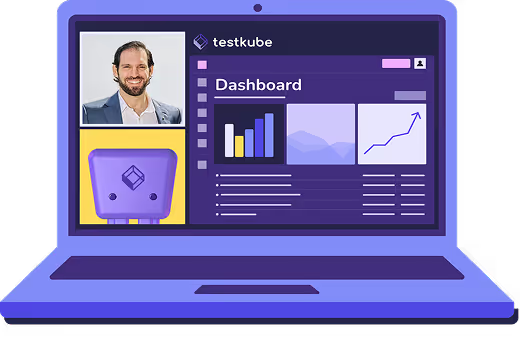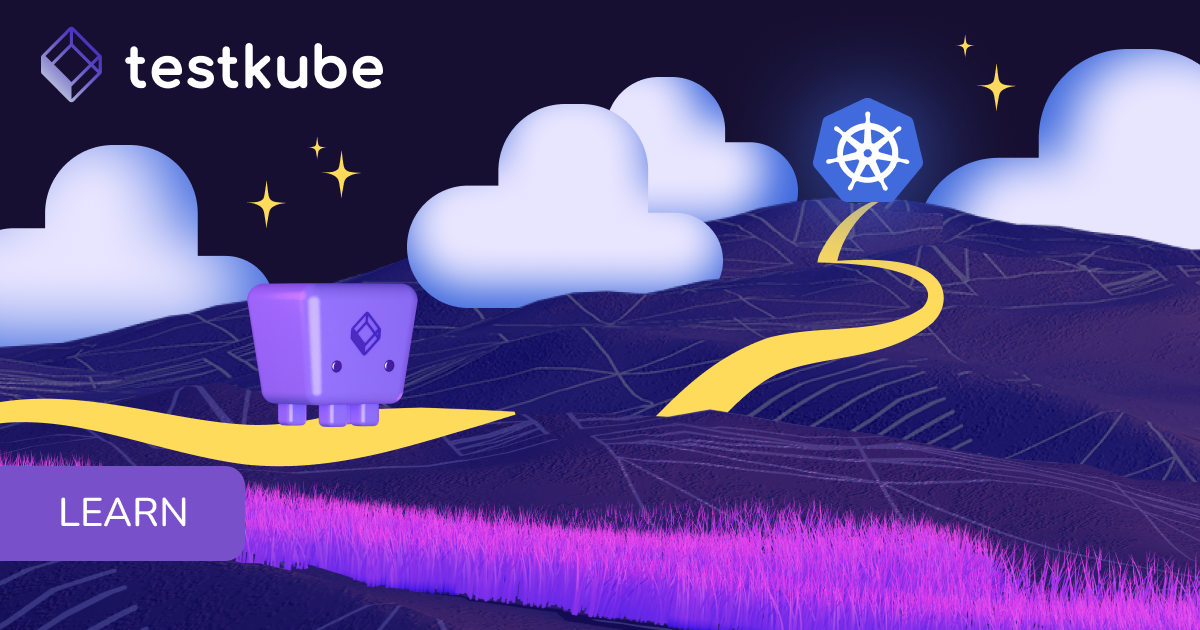

Table of Contents
Try Testkube instantly in our sandbox. No setup needed.




Table of Contents
Executive Summary
- Unit tests aren't enough—they validate individual components, but don't catch failures in service-to-service communication, database interactions, or complete user workflows.
- AI-accelerated development demands stronger testing—as AI tools generate more production code faster, teams without comprehensive automated testing are creating technical debt and incidents at AI speed.
- Start small and scale strategically—begin with 3–5 critical integration points and 2–3 key user journeys, prove value through reduced incidents, then expand methodically.
- Testing enables velocity, not slows it—teams with robust pipeline testing deploy confidently and frequently; those without become deployment-averse and lose productivity to preventable debugging.
Every time you push changes to production, there's that familiar feeling of uncertainty - even with solid unit tests, high code coverage, and multiple approvals, it always feels risky. Don't worry, you're not alone.
Unit tests validate your functions and business logic works correctly. They don't however validate that your checkout service can actually talk to your inventory system, or your authentication flow can handle database crashes or that your complete buyer journey from product search to payment works fine.
Individual components working perfectly doesn't mean your system works at all. This is where integration and end-to-end testing in CI/CD pipelines become essential. They're not safety nets - they're the foundation for deploying with confidence at scale.
In this post, we'll look at integration and end-to-end tests from a distributed systems perspective, why they matter and how to implement them using best practices.
Integration vs E2E Testing: What They Actually Mean
Before we dive into the implementation strategies, let's understand what integration and end-to-end testing actually mean and when should you use each.
What is Integration Testing?
As the name suggests, integration testing validates how your system's components interact with each other. Basically, testing conversations and information exchange between services, validating the data format, request and response handling, and failure scenarios.
Common integration testing scenarios include:
- API contract validation amongst microservices
- Database connection handling
- Message queue publishing and consumption
- Integration with external services like payment gateways, authentication providers, etc.
What is E2E Testing?
End-to-end testing validates the complete user flow from start to finish – replicating exactly how a user interacts with your application. These tests simulate real user behavior across your entire application stack – frontend, backend, services, databases and any other third-party integrations.
Typical E2E scenarios include:
- User authentication: login -> token generation -> authorized access -> logout -> session invalidation
- E-commerce checkout: browse products -> add to cart -> payment -> order confirmation
- New user onboarding journey: signup -> email verification -> profile setup -> first time app tour
Key Differences between Integration and E2E Testing
For foundational context on how these fit into your overall testing strategy, revisit our microservices testing blog post which covers the complete spectrum from unit to E2E tests.
Why Engineering Leaders Should Prioritize This Now
Now you understand the technical difference between integration and E2E testing. The harder question is convincing your organization to invest in comprehensive testing. Here's how you can convince your leadership.
AI Code Generation Shift
AI-generated code has reached an inflection point. Agentic tools like GitHub Copilot and Cursor are now producing substantial portions of production code across engineering organizations.
AI excels at generating isolated functions that pass unit tests, but it doesn't understand your system architecture or service boundaries. AI-generated payment logic might work perfectly in isolation while breaking your checkout flow's integration with inventory management.
If AI helps you ship features 2-3x faster, but you're catching integration issues in production, you're creating incidents 2-3x faster. API contract mismatches, incorrect service-to-service communication, and broken user workflows, all passing unit tests, all failing in production.
This is why orchestrating and executing all types of tests, from unit to integration to E2E, is now pretty much non-negotiable. You can't safely use AI coding assistants without automated validation that your system works as a whole. Teams combining AI-assisted development with comprehensive integration and E2E testing get velocity with confidence. Those that don't are just building technical debt at AI speed.
Production Incident Spiral
All engineering leaders are well aware of the production incident pattern: a bug escapes; customers are impacted; war rooms are set up for figuring out the root cause. The immediate costs like downtime, support tickets, and emergency patches are visible. But the hidden costs are worse: from deferred roadmap to burned-out engineers, productivity takes a hit.
Without comprehensive integration and E2E testing, this is what happens. Engineers would spend 30-40% of their time debugging issues that automated tests would have otherwise caught.
Confidence Crisis
Let's be honest, teams without a robust and comprehensive testing place are deployment-averse and often batch changes into frequent and risky releases. This means that larger deployments are riskier; failures are harder to debug, and the cycle repeats. This kills your team's velocity.
Integration and E2E testing break this cycle. When your CI/CD pipeline validates both component interactions and user workflows, Friday deployments become routine.
Velocity Paradox
For many teams, skipping tests feel like moving fast – until your customers find an issue with your application. Every feature request requires careful assessment of what might break. Simple changes take days because engineers fear unintended consequences.
Skipping tests might feel fast - until your customers find the bug. Investing in automation isn't overhead; it's how you build momentum without breaking things.
Enterprise Customers Won't Wait
Enterprise customers need proof that your deployments won't take down their business. That's where documented testing process, SOC2 compliance and validated quality gates help. Integration and E2E testing in your CI/CD pipelines provide proof through audit trails and validated release processes.
Without this, your sales teams will keep losing enterprise deals to customers with more mature testing practices.
Strategic Implementation Approach
Implementing integration and end-to-end tests requires a careful strategic approach rather than trying to test everything at once. Here's how you can build your testing infrastructure progressively.
Building Your Integration Testing Layer
Start by looking at all your system boundaries – anywhere data crosses service lines; that's an integration point worth testing. You should focus on the following three categories:
- Service-to-service communication: Test API contracts between services. If your order service interacts with the inventory, ensure validating the request format, response handling, and error scenarios.
- Data layer interactions: Test database connections, query executions, and transaction handling. Verify and validate if your services can read/write data correctly while handling any connection failures gracefully.
- External dependencies: Test integrations with external services like payment gateways, authentication services, message queues, and any third-party APIs. Use mocks during the development phase.
Focus on building an environment that mirrors production.
Implementing E2E Testing Strategically
Testing everything might sound good, but often it's not necessary, especially for end-to-end tests. Test what matters. Identify the important 3-5 user journeys that drive 80% of business value. For example, for e-commerce, this would be product search, checkout, and account management.
Choose an approach that complements your architecture:
- Browser automation: Use tools like Playwright and Selenium for front-end-heavy applications.
- API-based end-to-end for headless services
Run end-to-end tests strategically – not on every commit, but before releases, on schedules or triggered by specific changes to critical paths.
Pipeline Architecture Decisions
You should design your pipelines for speed and confidence. Execute integration tests in parallel when possible. Use sequential execution for tests with shared state or resource constraints.
Implement fail-fast strategies, i.e.: if an integration test fails, abort the pipeline immediately. Don't waste time running end-to-end tests against a broken build.
Use ephemeral test environments provisioned on-demand. Containers make this economical – spin up dependencies (databases, message queues, etc.) per pipeline run, then destroy them. This also reduces flakiness.
Cloud Native Considerations
If you're running your tests on Kubernetes, leverage its capabilities for testing:
- Namespace isolation: Each pipeline run gets its own namespace, preventing test interference and enabling parallel execution across multiple branches.
- Helm charts for reproducibility: Package your application and test dependencies as Helm charts. This ensures that every test run deploys the identical environment, eliminating "it works on my machine" problem.
- Service mesh: Validate traffic shadowing or fault injections using service meshes like Istio or Linkerd.
- Testing in production: Use feature-flags along with progressive delivery practices to validate changes with real users while limiting the blast radius.
Remember, your end goal isn't to recreate the production perfectly, but to catch integration and workflow issues before they reach users.
Best Practices That Actually Work
While strategic implementation is important, avoiding common pitfalls is equally critical. Here are some practices that successfully teams follow.
Start Small, Scale Smart
Trying to achieve comprehensive test coverage across your entire system in a single spring is a recipe for disaster. Teams get overwhelmed, maintaining tests becomes a burden, and the leadership loses confidence in the investment.
Instead, begin with 3-5 critical integration points and 2-3 key use journeys. Prove value through these with reduced incidents and faster deployments. Once you've gained trust and confidence, expand methodically to other areas. Design tests that are modular and can work across multiple scenarios – like your login test should work in any scenario.
Treat Test Data as Production Code
Manually creating and managing test data or copy-pasting production data dumps into test environments often become stable and breaks tests eventually.
The better approach is to version control all test data along with your application code. Automate data setup and teardown. Use synthetic data generation tools that create data which mirrors production patterns without exposing PII.
Eliminate Flaky Tests
Re-running or worse disabling a failing test because you assume they are unreliable isn't a good idea.
Treat flaky tests and identify the root cause. Most of the time, these tests fail due to race conditions, timing dependencies, shared state, and environment drift. Fix any of these issues or delete/recreate the test. Never let flaky tests remain in your pipeline. Best, make use of ephemeral environments to reduce test flakiness.
Integrate with Observability Stack
Treating test environments completely separate from production monitoring makes debugging failures slow.
Instead, use identical instrumentation in test and production – same tracing, logging and metrics. When the integration test fails, engineers should be able to see the traces and logs immediately. Your observability platform should show test results alongside production metrics.
Optimize for Developer Experience
Slower pipelines with cryptic failure messages that require a lot of effort to find the root cause affect your developer experience greatly.
A better approach here is to enable fast feedback loops with clear and actionable failure logs. For e.g.: instead of "test_checkout_flow failed", use "payment service returned HTTP 503, see logs at [link]". You can also enable local reproduction of issues using tools like Docker Compose or similar in cases where the tests behave differently when executed in local versus CI.
How AI is Transforming Pipeline Testing
Just how AI is changing the way we code, it's helping us enhance our testing practices as well. As we discussed in an earlier post on how AI is helping with testing, let us look at how AI specifically transforms pipeline performance and reliability.
Smarter Pipelines That Learn
With AI, traditional pipelines that run tests in the same order every time, can employ machine learning models to analyze historical test data to determine optimal test execution sequences based on failure probability and past execution times. Tests most likely to fail run first, catching issues faster.
It also brings in dynamic resource allocation and adjusts the resources based on the pipeline load and historical patterns – E2E tests get more resources during non-peak hours; parallelization increases when the infra capacity allows.
Intelligent Test Selection Cuts Waste
Running all the tests on every commit leads to resource wastage and developer time. AI can help analyze your code changes and predict which tests are relevant. A change to your payment service logic should only trigger payment integration tests and related E2E flows – not user management tests.
This leads to faster pipeline execution while maintaining the same defect catch rate. Developers get faster feedback while the deployment velocity increases.
Helps Separate Real Failures from Noise
Flaky tests are everywhere. With AI, you can detect infrastructure failures (network timeouts, environment issues) from genuine code problems. It correlates failures across pipelines, whilst linking random failures to a specific library version or infra change.
This reduces false positives that train teams to ignore failures. When AI flags a failure as legitimate, it's worth investigating.
Self-Improving Test Coverage
AI can analyze production incidents and suggest specific tests to prevent recurrence. A production bug in the checkout flow that slipped through regular testing triggers automation recommendations to add integration tests for payment service with suggested test code.
Your testing strategy should evolve based on real-world failures and not guess what might break. Over time, this will improve coverage and stability of the product.
Conclusion
Enabling integration and E2E tests in your pipeline isn't about catching every possible bug - it's about creating systems where teams deploy confidently and move quickly. Quality gates that enable speed, not prevent it.
The path forward is straightforward: start with 3-5 critical points for your integration tests and 2-3 essential user journeys for your E2E tests. Prove value through reduced incidents and faster deployments. Scale systematically based on where production issues emerge. Layer AI optimization as your foundation solidifies.
The question isn't whether you can afford comprehensive testing - it's whether you can afford the alternative.
FAQs: Addressing Common Concerns
Here are the most common questions we hear from engineering teams evaluating pipeline testing strategies.


About Testkube
Testkube is a cloud-native continuous testing platform for Kubernetes. It runs tests directly in your clusters, works with any CI/CD system, and supports every testing tool your team uses. By removing CI/CD bottlenecks, Testkube helps teams ship faster with confidence.
Explore the sandbox to see Testkube in action.






